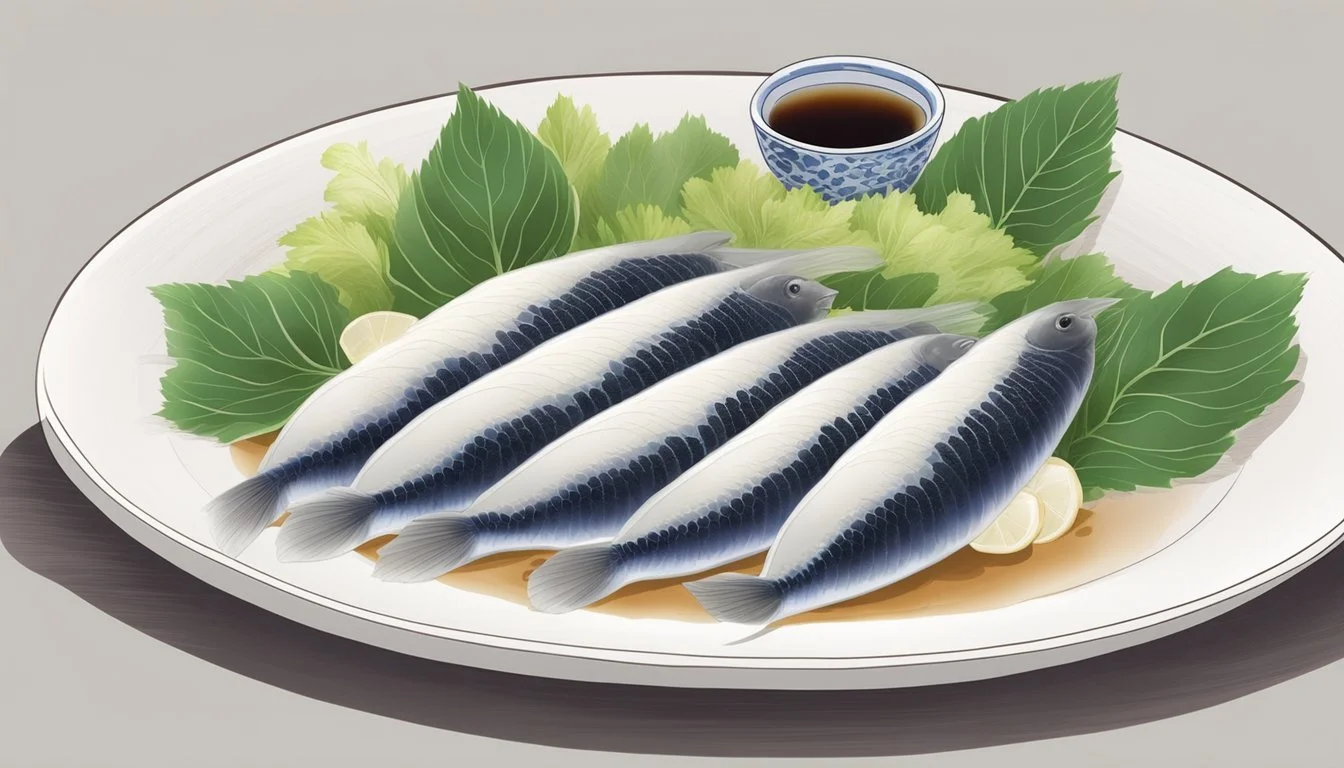Shirako Unveiling Japan's Polarizing Delicacy of Fish Sperm Sacs
Shirako, translating to "white children" in Japanese, is a unique element of the country's diverse and nuanced cuisine. It refers to the sperm sacs, or milt, of male fish, most commonly cod. Recognized for its pale, creamy appearance, shirako is a traditional Japanese delicacy that is often consumed raw, cooked, or used as a garnish. Its velvety texture and subtle flavor reminiscent of the sea make it a revered component in various Japanese dishes.
In Japan, the appreciation for shirako is part of a broader cultural tendency to utilize all parts of the fish, a practice that reflects the country's deep respect for the natural resources it harvests. Despite its traditional roots, shirako's nature as fish sperm sacs can make it a controversial dish among the uninitiated, sometimes evoking strong reactions due to its distinctive origin.
However, shirako is praised not only for its unique taste and texture but also for its nutritional value. It is a rich source of protein and vitamins, making it a sought-after ingredient for those who prize both the culinary and health aspects of their food. As a result, shirako holds a firm place in Japan's culinary landscape, bridging the gap between historical practices and contemporary delicacies.
Historical Background and Cultural Significance
Shirako, a distinctive element of Japan's culinary heritage, holds a layered history and cultural importance that spans from its traditional consumption to the role it plays in festivals, despite some controversial discussions surrounding it.
Traditional Role in Japanese Cuisine
Traditionally, Shirako, or fish sperm sacs, has been an esteemed element in Japanese cuisine. Appreciated for its soft, creamy texture, Shirako is typically sourced from cod or pufferfish (fugu) and enjoyed for its mild flavor. It can be served raw, often alongside sushi, or cooked in various styles such as tempura. Its integration into Japanese cuisine dates back to the Edo period, reflecting a long-standing heritage of utilizing all parts of the catch in cooking to minimize waste, exemplifying the sustainability principles inherent in Japanese gastronomy.
Symbolism and Festivals
During certain times of the year, notably in the winter season when fish sperm sacs are most readily available, Shirako takes on symbolic significance. It is often associated with fertility and renewal, tying in with cultural narratives and seasonal celebrations. Festivals in Japan sometimes feature Shirako as a special dish, reinforcing its status not just as food but as a harbinger of good fortune and prosperity.
Controversies and Ethical Concerns
Despite its esteemed status, Shirako is not without its detractors. There are ethical concerns and controversial viewpoints regarding its consumption, particularly from those unfamiliar with or opposed to the idea of eating reproductive organs. Debates also arise from the sustainability of fish populations and fishing practices. In Japan, however, Shirako is a delicacy rooted in tradition, and its consumption is typically viewed within the context of cultural significance and culinary appreciation, rather than controversy.
Understanding Shirako
Shirako, often perceived as a controversial delicacy, holds a particular significance in Japanese cuisine due to its unique origin and taste.
Definition and Description
Shirako, which translates from Japanese as "white children", is the milt or reproductive organ of male fish, specifically cod, carp, and pufferfish. Milt refers to the seminal fluid of fish containing sperm which is encased in sacs. In appearance, it is creamy and pale, often resembling soft tofu or custard. Culinary enthusiasts value it for its soft and velvety texture and the mild, sea-like flavor it offers.
Sourcing and Seasonality
The sourcing of Shirako is tightly coupled with the spawning seasons of the fish it is harvested from. The prime season is in the winter, particularly for cod, when the milt sacs are at their fullest. Carp and pufferfish also contribute to the shirako market, with each type having its own specific seasonality. Fishermen extract the milt sacs with care to preserve their delicate nature. In Japanese cuisine, Shirako may be served raw, gently cooked, or incorporated into a variety of dishes.
Culinary Techniques and Preparations
Shirako, a delicacy in Japan, is the milt or sperm sacs of male fish and is notable for its creamy texture and mild, seafood taste. Its preparation spans a range of culinary techniques from simple raw presentations to complex cooked dishes.
Raw and Sashimi Options
In its simplest form, shirako can be enjoyed raw. With attention to freshness and quality, it is sometimes served sashimi-style. This preparation allows for the creamy, delicate flavors to shine, often paired with ponzu sauce and garnishments like chives to enhance the dish's subtlety.
Raw Preparations include:
On top of sushi rice
As sashimi with soy sauce or ponzu
Cooked Varieties: Tempura and Chawanmushi
When cooked, shirako takes on different textures and flavors that complement various dishes. A common method is tempura, where the shirako is lightly battered and fried, resulting in a crispy exterior and a warm, custard-like interior. Another popular cooked method is incorporating it into chawanmushi, a Japanese-style egg custard, yielding a smooth and rich flavor profile.
Cooked Shirako might be found in:
Tempura: Encased in a light, airy batter and fried until golden
Chawanmushi: Mixed in with the custard and steamed to perfection
Incorporation into Other Dishes
Beyond standalone options, shirako is sometimes included as a component in various dishes. Whether added to hot pots for a luxurious twist or paired with vegetables and sauces, the incorporation of shirako provides a creamy and unique flavor that's appreciated for its ability to harmonize with different ingredients.
Examples of Shirako in dishes:
Mixed with vegetables in a hot pot
Paired with rice or noodles in savory entrées
Flavor Profile and Texture
Shirako's flavor profile is often described as mild and sea-like, while its texture is commonly revered for being both rich and creamy. This delicacy provides a distinctive umami taste, indicative of its maritime origins.
Comparative Analysis
Shirako is regarded for its creamy texture, akin to custard or whipped cream. In comparison to other fish roes, shirako is unique: it doesn't burst or have the granularity that some roe like salmon eggs do. Instead, it melts in the mouth which is a delicacy for those who appreciate subtle and refined seafood tastes. The flavors are delicate, not overpowering, and allow for the natural umami of the seafood to be the dominant flavor note.
Pairings and Accompaniments
Shirako pairs well with a variety of accompaniments that complement its texture and taste:
Soy Sauce: A light drizzle elevates the umami.
Wasabi: Adds a sharp contrast and heat, used sparingly.
Common serving suggestions include placing atop a bowl of warm rice or tucked into a crisp tempura batter. Shirako's versatility is seen in how it can be served raw or gently cooked, with the latter method bringing out a different dimension of its creamy texture.
Health Benefits and Nutritional Information
Shirako, known for its smooth texture and delicate flavor, is not only a sought-after delicacy but also a source of several nutritional benefits mainly attributed to its protein and vitamin content.
Protein and Vitamin Content
Shirako is rich in protein, essential for muscle building and repair. Each serving typically contains a substantial amount of good quality proteins, which are crucial for bodily functions. In addition to protein, Shirako provides an array of vitamins, especially B vitamins like B12, which plays a vital role in brain health and the creation of DNA. However, the exact nutritional content can vary based on the type of fish it's harvested from.
Considerations for Dietary Restrictions
Individuals with dietary restrictions should be mindful when considering adding Shirako to their diet. Given that it is an animal-derived food, it is not suitable for vegetarians or vegans. Furthermore, those with allergies to seafood should avoid Shirako, as it may trigger allergic reactions. Despite its health benefits, one should always consider their overall dietary needs and restrictions.
The Controversy Around Consumption
Shirako, or fish sperm sacs, is a delicacy in Japan that sparks discussion due to its unique nature and the implications of its consumption. This section delves into the sustainability and ethical debates as well as the potential dangers and risks associated with this controversial food.
Debates on Sustainability and Ethics
Sustainability is a core concern when discussing Shirako. Critics argue that overfishing for this delicacy could negatively impact fish populations, raising serious ethical concerns. One of the most debated points is whether the culinary demand for Shirako stands in conflict with conservation efforts.
Species: Cod and pufferfish are among the fish harvested for Shirako.
Bycatch: Harvesting these species for Shirako may lead to increased bycatch, a significant issue in fisheries.
Ethics come into play with the treatment of living creatures for consumption. This is particularly poignant with species like the pufferfish, or fugu, which is also known for its roe. Pufferfish are esteemed, not just for Shirako but for the fish's other parts, despite the deadly risks involved.
Dangers and Risks
The consumption of Shirako is not without its dangers and risks. One notable risk is associated with the pufferfish, which contains tetrodotoxin, a potent neurotoxin.
Licensed Chef: Only a chef licensed in the preparation of pufferfish can ensure that Shirako sourced from this species is safe to eat.
The licensing process to become a licensed chef capable of safely preparing pufferfish is rigorous, due to the potential for a deadly outcome if improperly handled. While the risk of tetrodotoxin poisoning from consuming Shirako is less than other parts of the pufferfish, it still represents a significant concern. This risk often fuels the controversial nature of Shirako's consumption, as many question whether the delicacy justifies these challenges.
Regional Variations and Specialties
Shirako, a traditional Japanese dish, manifests its nuances through regional preparations and unique presentations, each offering a different taste experience while staying true to its core identity as a rich and creamy delicacy.
Local Practices in Tokyo and Hokkaido
In Tokyo, the approach to shirako embodies the city's balance between respect for tradition and a flair for innovation. Here, shirako is often served in high-end sushi restaurants, either gently warmed or at room temperature, to allow the full subtlety of its flavor to unfold. Seasoned chefs typically pair it with a dash of soy sauce or a light citrus dressing, making it a refined and evocative experience.
Moving north to Hokkaido, the focus shifts to the freshness and quality inherent in the local seafood. The practice in Hokkaido often involves serving shirako as part of a kaiseki meal, presenting it alongside other seasonal specialties. The cold climate contributes to the firmer texture and sweeter taste of the cod's milt, ensuring a distinct sensory delight that is both pure and intense.
Dishes Unique to Kyushu and Osaka
Kyushu, known for its deeply-flavored cuisines, introduces shirako to a richer, more assertive context. Specialties include shirako ponzu, where the milt is lightly blanched and then dipped in a citrus-infused soy sauce, providing a zesty counterpoint to the creaminess of the dish. Another local favorite is shirako tempura, offering a crispy exterior that gives way to the creamy delicacy within, embodying a satisfying contrast in textures.
Osaka's playful and hearty food culture brings a distinct twist to shirako. Comforting and casual, the milt might be incorporated into a hot pot, known locally as nabe, blending with a variety of savory ingredients to enrich the broth with its unique flavors. Alternatively, it can appear in an Osaka-style okonomiyaki, where it adds a velvety contrast to the savory pancake, enhancing the complexity of this beloved street food staple.




